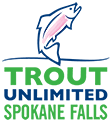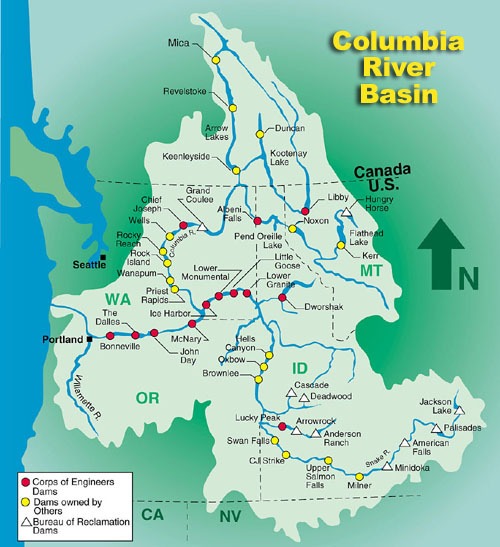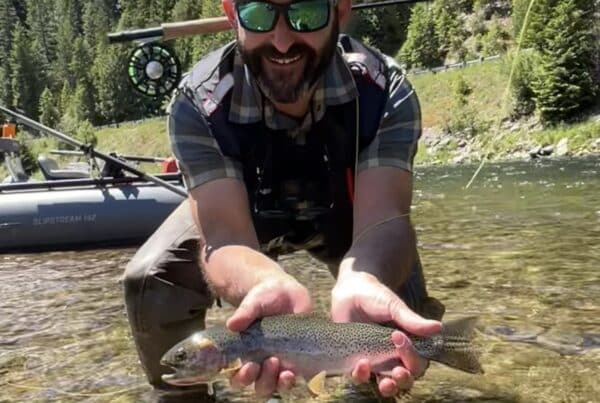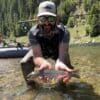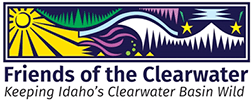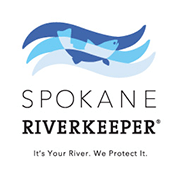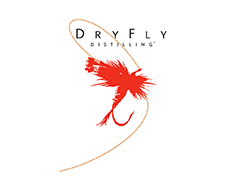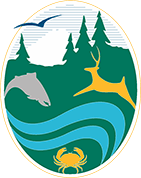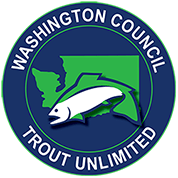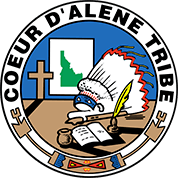 December 13, 2016
December 13, 2016
Brigadier General Scott A. Spellmon
Commander, Northwestern Division
Army Corps of Engineers
Mr. Elliott Mainzer, Administrator
Bonneville Power Administration
Ms. Lorri Lee
Northwest Regional Director
U.S. Army Corps of Engineers
Bureau of Reclamation
U.S. Army Corps of Engineers
Attn: CRSO EIS
P.O. Box 2870
Portland, Oregon 97208-2870
Re: National Environmental Policy Act (NEPA) Scoping for the Columbia River System Operations and Configuration Environmental Impact Statement
The Pacific Fishery Management Council (Council) is in receipt of the Action Agencies’ letter and Federal Register Notice of September 30, 2016, inviting scoping comments on the Columbia River System Operations and Configuration (CRSOC) environmental impact statement (EIS).
As you know, the Pacific Council is one of eight Regional Fishery Management Councils established by the Magnuson-Stevens Fishery Conservation and Management Act (MSA) of 1976, and recommends management actions for Federal fisheries off Washington, Oregon, and California. The MSA includes provisions to identify, conserve and enhance essential fish habitat (EFH) for species regulated under a Federal fishery management plan. As defined in the MSA, the term “essential fish habitat” means those waters and substrate necessary to fish for spawning, breeding, feeding, or growth to maturity. For the purpose of interpreting this definition of EFH, “waters” include aquatic areas and their associated physical, chemical, and biological properties that are used by fish and may include aquatic areas historically used by fish where appropriate; “substrate” includes sediment, hard bottom, structures underlying the waters, and associated biological communities; “necessary” means the habitat required to support a sustainable fishery and the managed species’ contribution to a healthy ecosystem; and “spawning, breeding, feeding, or growth to maturity” covers a species’ full life cycle (50 CFR 600.10).
EFH for Pacific Coast salmon, as designated by the Council, includes all waters that are currently occupied by stocks of salmon managed by the Council, as well as most of the habitats that were historically occupied by those stocks. Accordingly, the Columbia River and most of its tributaries downstream of Chief Joseph Dam and the Snake River and most of its tributaries downstream of the Hells Canyon Dam are designated as EFH for Chinook salmon and coho salmon.
The MSA authorizes the Council to comment on any Federal or state activity that may affect the habitat, including EFH, of a fishery resource under its authority. Furthermore, the Council is obligated to provide comments and recommendations for activities that the Council believes are likely to substantially affect the habitat of an anadromous fishery resource under its authority. The regulatory guidance that implements the EFH provisions of the MSA (50 CFR Part 600) defines an “adverse effect” as any impact that reduces quality and/or quantity of EFH. Adverse effects may include direct or indirect physical, chemical, or biological alterations of the waters or substrate and loss of, or injury to, benthic organisms, prey species and their habitat, and other ecosystem components, if such modifications reduce the quality or quantity of EFH.
The scoping letter and Notice indicate the Action Agencies are seeking comments to “help define the issues, concerns, and the scope of alternatives to be addressed in the environmental impact statement (EIS).” Accordingly, we offer the following general comments followed by several specific recommendations.
The heart of the process for preparing an EIS is the development of a full range of reasonable alternatives. The 1990s-era Columbia River System Operations Review EIS, which is indicated in your scoping Notice as having guided Columbia River system operations for nearly twenty years, has been the basis for a series of biological opinions the courts have rejected as inadequate to avoid jeopardy to Columbia basin salmon and steelhead listed as threatened or endangered under the Endangered Species Act (ESA). Given this history and the importance of Columbia Basin salmon and steelhead populations, it is of the greatest urgency that the Action Agencies develop a full range of alternatives.
These alternatives must be analyzed for their ability to contribute to the recovery of ESA-listed stocks and restore Columbia River salmon populations to harvestable levels that sustain sport, commercial, and tribal communities. They should be wide-ranging, and should consider ways to improve the conditions or practices governing all “H’s” – habitat, hydrosystem, harvest, and hatcheries – as well as predation from native and non-native species. We suggest that different alternatives examine approaches with varying emphases on different H’s, but all with an eye toward addressing the recent court opinion, which is concerned with increasing juvenile and adult survival in the main Columbia/Snake migration corridor, reversing negative trends for stocks such as upper Columbia River spring chinook, and accelerating and more firmly establishing positive trends for other stocks.
The broad scope of the CR SOC also allows for consideration of actions that will improve the status of non-ESA-listed stocks and meet mitigation responsibilities, and actions that may benefit economic sectors such as sport and commercial fishing as well as salmon. On a river governed by numerous processes that are not always closely coordinated, the CRSOC is a rare opportunity for the whole region to consider creative and integrated solutions to long-running controversies. This is an opportunity to consider the true costs and benefits of a range of alternatives needed for the recovery of ESA-listed salmon on the Columbia River system and its fisheries amidst the changes confronting the region in the 21st century.
Alternatives analyzed should include, among other measures, steps to improve river flows and temperatures, increased spill at mainstem dams, and other altered dam operations to benefit juvenile survival. As strongly suggested by the recent court opinion, they should also examine removal of the four lower Snake River dams.
It is important that the alternatives ensure compliance with current mitigation obligations. Since the inception ofhydropower facilities in the Northwest, hatchery and habitat programs have been used to mitigate the impacts of dams on lost spawning and rearing habitat. As long as the dams remain in place, the mitigation obligations for lost habitat remain.
To assure a transparent and more broadly accepted EIS, we urge you to make the framework against which the alternatives will be assessed transparent and available for public review as soon as possible. We believe it is appropriate to seek scientific review of this framework by qualified, independent third parties.
The alternatives you develop and consider in the CRSOC EIS must account for the foreseeable effects of climate change on both the freshwater and ocean ecosystems on which Columbia Basin salmon depend. These alternatives should include both an analysis of the extent to which climate change may affect ( e.g., erode the effectiveness of) any proposed mitigation measures, and specific actions to address the additive effects of climate change on these fishes. Scientific understanding of the impacts of climate change on Columbia basin salmonids has advanced rapidly and provides an extensive basis for both developing and evaluating proposed action and alternatives.
Detailed Recommendations
Hydrosystem Configuration and Operation
The development, configuration, and operation of the hydrosystem have negatively impacted juvenile and adult salmon migration and survival in numerous ways. Hydrosystem impacts contribute to the threatened and endangered status of seven Interior Columbia Evolutionarily Significant Units (ESUs) and Distinct Population Segments. These well-documented impacts include protracted and impeded juvenile outmigration resulting in increased or extended exposure to diminished water quality (including temperature, contaminants, and pathogens), prolonged exposure to predators, injury and direct mortality during turbine passage or during juvenile bypass, increased energetic costs, and poorly-timed estuary entry relative to a smolt’s physiological state. For smolts that do not experience direct freshwater mortality, delayed mortality upon entering the estuary and ocean due to previous hydrosystem experience continues to occur. Impacts to returning adults include their previous juvenile hydrosystem migration experience. Upon returning to freshwater, migration delays expose adults to threats (water quality, predators, delay at fishways, and fallback after passage) resulting in direct mortality, as well as increased energetic expenditure (energy that could otherwise be allocated to reproduction). In the case of contaminants, exposure to sub-lethal effects likely further contributes to diminished reproductive potential.
Alternatives prepared for the EIS should consider innovative changes to the configuration and operations that will improve conditions for in-river fish passage and address inadequate water quality caused or aggravated by the hydrosystem.
Recommendations: This EIS should consider a full suite of hydrosystem configurations and operations to assess conditions against a standard that will allow delisting and recovery of Columbia River salmon ESUs. Alternatives to evaluate should encompass aggressive reconfiguration of long-standing operations that improve migration conditions and would lead to improvements in the full life-cycle survival of anadromous species in the Columbia River up to and including additional drawdown of reservoirs, breaching of the four lowermost dams on the Snake River, and seasonal flow augmentation.
Metrics to assess alternative hydrosystem operations and configuration
Bypass fish passage operations are known to increase latent, or delayed, mortality associated with the hydrosystem. The EIS should use Smolt-to-Adult Returns (SARs) as the most comprehensive analytical metric for assessing alternative hydrosystem operations and configuration. The Northwest Power and Conservation Council continues to endorse an SAR goal of 2-6 percent (average 4 percent), and it would be appropriate to consider the probability of achieving the regional goal as part of each alternative’s evaluation.
Recommendation: The EIS should assess the probability of achieving these regional SAR goals when assessing alternative hydrosystem operations and configuration.
Assess operations that increase spill and are intended to improve Smolt-to-Adult Return rates
Spill is known to be the best route of passage past dams for juvenile salmon and for enhancing life-cycle survival benefits (Muir et al. 2001, Petrosky and Schaller 2010, Haeseker et al. 2012, Tuomikoski et al. 2013, Schaller et al. 2014, ISAB 2014). The region needs to better understand the opportunities, costs, and benefits of providing system-wide Federal Columbia River Power System (FCRPS) operations at various total dissolved gas (TDG) spill caps in order to optimize juvenile fish survival during passage. The term “spill cap” means the maximum project spill level that meets, but does not exceed, the TDG cap. This definition of spill cap is consistent with the Corps definition of the term in the 2016 Fish Operation Plan.
Current state waivers limiting total dissolved gas levels are a primary constraint to voluntarily increasing spill to levels known to benefit fish survival. However, given recent findings on lifecycle fish survival benefits (Haeseker et al. 2012, Marmorek et al. 2013, Schaller et al. 2014), review of existing rules and waivers to allow higher dissolved gas levels as a measure to improve life-cycle fish survival has merit. The EIS should assess the benefits of potential future rule changes and evaluate opportunities, costs, and benefits of maximizing voluntary spill at TDG spill caps of 120 percent and 125 percent of saturation levels if regulations and waivers are revised. The EIS should evaluate a suite of FCRPS operations intended to maximize spill for juvenile fish survival throughout the FCRPS. This will allow the region to evaluate the efficacy of spill in increasing adult returns to the Columbia Basin.
Recommendation: The Action Agencies should assess the opportunities, costs and benefits of providing spill for juvenile fish passage by maximizing voluntary spill at TDG spill caps under current TDG rules as well as spill caps of 120 percent and 125 percent TDG.
Transportation should be de-emphasized as a fish mitigation measure in favor of increased spill operations and an improved in-river migration environment
Emerging evidence on the effectiveness of transportation continues to show this operation provides only limited benefits for ·fish survival under very specific circumstances. It exacerbates straying rates that increase the proportion of hatchery fish on natural spawning areas and the out-of-basin straying rates of natural-origin fish. It can also delay adult migration, extending adults’ exposure to poor water quality conditions. While there are many examples of these negative effects, none is more vivid than the 2015 temperature emergency. As noted by NOAA’s 2015 sockeye salmon passage report, adult Snake River sockeye salmon that are transported as juveniles seem to have an impaired homing ability compared to those that migrate inriver. In 2015, this resulted in delays in upstream passage and increased exposure to elevated temperatures, and likely contributed to the large disparity in estimated survival between Bonneville and Lower Granite dams for smolts that were transported (0 percent survival) and those that migrated inriver as juveniles (8 percent) (NOAA 2015).
Recommendation: The Action Agencies should consider transportation as a lower priority fish passage option. If barging operations associated with transportation impede or diminish more beneficial spill operations, that alternative must have demonstrated significant, full life cycle survival benefits that exceed in-river migration.
Evaluate the development of a contingency plan that identifies and addresses future high temperature conditions that delay adult migration and threaten adult salmon survival
In 2015, Columbia Basin salmon experienced high water temperature conditions that delayed adult migration and ultimately caused record high mortality among sockeye and summer Chinook salmon. Climate change projections show similar events can be expected with increasing frequency in the future. While the 2015 event was particularly harmful, temperatures in mainstem reaches routinely .exceed water quality standards for a portion of the adult passage season.
Progress has been made in cooling adult fishways at some FCRPS facilities, and we are hopeful that similar cooling structures can be provided at other FCRPS locations. However, high water temperatures occur throughout the reservoirs of the FCRPS. Reduced water travel time and increased surface area with exposure to solar radiation are primary contributors to high reservoir temperatures.
Operations to provide cooling need to anticipate annual water and weather conditions that may indicate potential thermal emergencies. Once temperatures exceed water quality standards, the system has little flexibility to provide cool water for fish passage.
Recommendations: The EIS should evaluate alternatives to mitigate high water temperature conditions. One alternative the Council recommends is the development of a thermal emergency contingency plan to include: (a) an explanation of conditions in areas within and outside of tailraces and forebay that will trigger its implementation; (b) a set of mitigation actions to be taken once triggered; and (c) a monitoring program for triggering metrics that incorporates areas outside of and within tailraces, forebays, and fishways. The cooling operations under consideration should include alternative drawdown timing at storage reservoirs in Canada, at Grand Coulee, Libby, and Dworshak dams, and should incorporate scenarios for drawdown at Lower Granite dam.
The role of hydrosystem operations and impoundments on toxics contaminant loads and cycling
There continues to be a lack of comprehensive planning regarding the issue of toxic contamination in the Columbia River basin. Dams contribute to the persistence of chemical loads in reservoir sediments because many pollutants tend to settle in reservoirs. The pesticide DDT and polychlorinated biphenyls (PCBs) have long been banned, but continue to enter the mainstem through runoff and from hazardous waste releases. Other contaminants including arsenic, dioxins, radionuclides, lead, pesticides, industrial chemicals, fire retardants, and newly-emerging contaminants such as pharmaceuticals in wastewater have known, and less well-known, effects on juvenile fish survival and lifetime productivity. The EIS should consider and assess the role of hydrosystem operations and impoundments in aggravating the effects of these contaminants. Reducing pollutants will require a comprehensive, coordinated effort by government and nongovernmental organizations.
Recommendation: The EIS should follow the Independent Scientific Advisory Board (ISAB) recommendation to better account for the impacts of toxic contaminants on populations in the basin to ensure a robust toxics abatement program is implemented.
Transparency and scientific review
This EIS needs to fully analyze a reasonable range of alternatives that includes action necessary to optimize salmon life cycle benefits and survival in order to assure delisting under the ESA, and to assure that required mitigation measures are met to restore Columbia River salmon populations to harvestable levels that sustain sport, commercial, and tribal communities. In 2013, the White House Council of Environmental Quality (CEQ) issued Principles and Requirements for Federal Investments in Water Resources, which supersede CEQ’s 1983 Principles & Guidelines. The new Principles and Requirements went into effect immediately and apply “to a broad range of Federal investments that by purpose, either directly or indirectly, affect water quality or water quantity.” The new Principles and Requirements describe a comprehensive approach for evaluating the potential socioeconomic costs and benefits of a proposed course of action. This is especially important for this EIS because the actions and alternatives under consideration will have a complex set of market and nonmarket socioeconomic costs and benefits, including the benefits of restored fisheries to treaty Indian and non-Indian fisheries, all of which should be considered as part of your analysis.
Recommendation: The Action Agencies should make the framework, against which the alternatives in the EIS will be assessed, transparent and available for public review as soon as possible. The Action Agencies should seek scientific review of this framework by wellqualified, independent third parties.
The Council hopes its comments are helpful in the National Environmental Policy Act scoping for the CRSOC EIS. We trust that future draft document comment periods can be scheduled to overlap with Council meetings to allow for Council review and comment, as the success of the next Biological Opinion for the FCRPS is directly linked to the success of Council-managed stocks and the well-being of Northwest fishing communities and the region’s broader economy and environment.
Thank you for the opportunity to comment on this important undertaking.
Sincerely,
Charles A. Tracy Executive Director, Pacific Fishery Management Council
7700 NE Ambassador Place, Suite 101 Portland, OR 97220-1384
Phone 503-820-2280 I Toll free 866-806-7204 I Fax 503-820-2299 I www.pcouncil.org Herbert A. Pollard II, Chair I Charles A. Tracy, Executive Director
References:
Haeseker, S.L., J.A. Mccann, J. Tuomikoski, and B. Chockley. 2012. Assessing freshwater and marine environmental influences on life-stage-specific survival rates of Snake River spring-summer Chinook salmon and steel head. Transactions of the American Fisheries Society 141(1):121-138.
ISAB (Independent Scientific Advisory Board). 2014. ISAB Report 2014-2. Review of the Proposed Spill Experiment. http://www.nwcouncil.org/media/6939290/ISAB2014-2.pdf
Marmorek, D., A. Hall, and M. Porter. 2013. Comparative Survival Study (CSS) 2013 Workshop Report. Prepared by ESSA Technologies Ltd., Vancouver, B.C. for the Fish Passage Center (Portland, OR) and U.S. Fish and Wildlife Service (Vancouver WA). xi+ 47 pp. +Appendices. Available: http://fpc.org/documents/CSS/CSS_20l3_ Workshop_Report_-_FINAL
_ w _presentations. pdf
Muir, W.D., S.G. Smith, J.G. Williams, and B.P. Sandford. 2001. Survival of juvenile salmonids passing through bypass systems, turbines, and spillways with and without flow deflectors at Snake River dams. North American Journal of Fisheries Management 21 :135-146.
NOAA. 2015. 2015 Adult Sockeye Salmon Passage Report. http://www.westcoast.fisheries.noaa.gov/publications/ hydropower/fcrps/2015 _ adult_ sock eye_ salmon _passage _report. pdf
Petrosky, C.E., and H.A. Schaller. 2010. Influence of river conditions during seaward migration and ocean conditions on survival rates of Snake River Chinook salmon and steelhead. Ecology of Freshwater Fish 10:520-536.
Schaller, H.A., C.E. Petrosky, and E.S. Tinus. 2014. Evaluating river management during
seaward migration to recover Columbia River stream-type Chinook salmon considering the
variation in marine conditions. Canadian Journal of Fisheries and Aquatic Sciences. 71 :259-271.
Tuomikoski, J., J. McCann, B. Chockley, H. Schaller, S. Haeseker, J. Fryer, B. Lessard, C. Petrosky, E. Tinus, T. Dalton, and R. Ehlke. 2013. Comparative Survival Study (CSS) of PIT tagged Spring/Summer/Fall Chinook, Summer Steelhead, and Sockeye. 2013 Annual Report Project No. 199602000. http://fpc.org/documents/CSS/CSS_20l3_Annual_Report_rev1b.pdf
